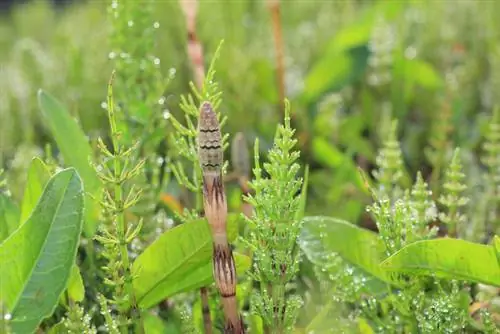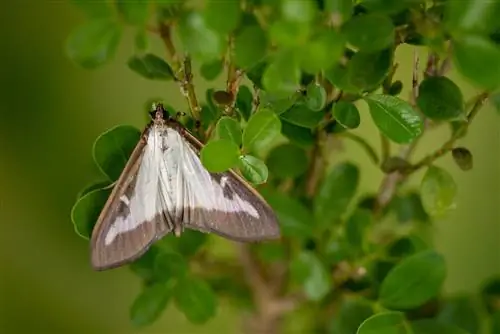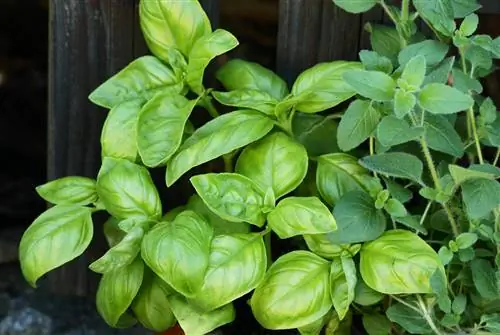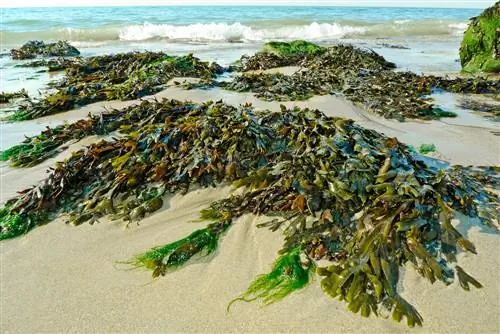- Author admin [email protected].
- Public 2023-12-16 16:46.
- Last modified 2025-06-01 06:02.
Field horsetail (Equisetum arvense) and swamp horsetail (Equisetum palustre) look very similar, making it difficult for laypeople to distinguish them. Since marsh horsetail is poisonous, unlike field horsetail, you should be careful when collecting it that you get the wrong type of horsetail. How to tell the difference.

What is the difference between field horsetail and swamp horsetail?
To distinguish field horsetail from swamp horsetail, pay attention to the location, sporangia color, cones, stem width, leaf sheaths and color of the leaf axils. Field horsetail has brown sporangia, wider stems and fewer serrations on the leaf sheaths.
Field horsetail is not poisonous
Since field horsetail or horsetail is not poisonous, it is collected or planted in natural medicine, for use as fertilizer or pesticide in the garden and for cosmetic products.
Field horsetail can also be used in the kitchen, although the taste is rather bitter. It only becomes dangerous if you confuse marsh horsetail and horsetail with each other.
If you don't trust yourself to recognize field horsetail and distinguish it from marsh horsetail, it's better not to pick the plants. If necessary, use a plant guide (€26.00 on Amazon) to help you determine the location.
Different locations of the two horsetail species
An indication of whether horsetail is poisonous or non-poisonous is the location where the plant grows.
Field horsetail prefers - as the name suggests - fields and meadows. But it also likes to spread along field edges and in the lawn.
Swamp horsetail prefers to grow in swampy areas. You can find the plants near bodies of water. The poisonous species grows in pastures next to depressions in the ground and in places where the groundwater table is very high.
How to know which species you are looking at
- Color of the sporangia (spore ears)
- Cones on the sprouts
- leaf sheaths
- Stem
- Coloring of the leaf axes
The sporangia of field horsetail are on brown sprouts, while the sprouts of marsh horsetail are green. If there are brown cones on the sprouts, it is marsh horsetail.
Field horsetail has wider stems. In contrast to the marsh horsetail, they are wider than three millimeters.
Count the spikes on the horsetail leaf sheaths. If there are more than eight, you are dealing with non-toxic field horsetail. In addition, the lower sheaths of the side branches of the field horsetail are lighter colored.
The distance between the individual leaf shoots compared to the length of the side shoot sections provides unequivocal information as to whether it is field horsetail or marsh horsetail. Find out more here:

Tip
Swamp horsetail contains the poison palustrin, which is also included in the botanical name. It is not only grazing animals such as horses and cows that can experience symptoms of poisoning when consumed. Therefore, be careful when picking.






